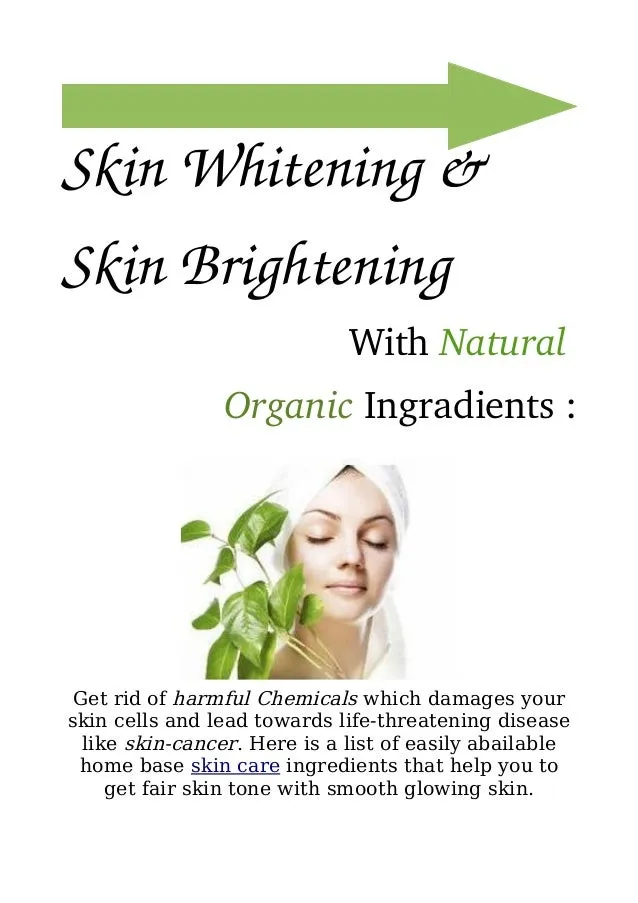What Are Whitening Ingredients
Whitening ingredients are substances used in skincare products to lighten skin tone, reduce the appearance of dark spots, and even out skin pigmentation. These ingredients work by targeting melanin, the pigment responsible for skin color. They can inhibit melanin production, promote cell turnover, or block the transfer of melanin to skin cells. Many individuals seek these ingredients to address concerns like hyperpigmentation, sun damage, acne scars, and uneven skin tone, aiming for a brighter, more radiant complexion. It’s crucial to understand how these ingredients function and how to use them safely and effectively.
Types of Whitening Ingredients
Vitamin C Benefits

Vitamin C, also known as ascorbic acid, is a powerful antioxidant that plays a significant role in skin health. It helps protect the skin from free radical damage caused by environmental factors like UV exposure and pollution. Beyond its antioxidant properties, Vitamin C is a potent whitening ingredient, due to its ability to inhibit tyrosinase, an enzyme crucial for melanin production. This action helps reduce dark spots and hyperpigmentation, leading to a more even skin tone and overall brighter complexion. Furthermore, Vitamin C promotes collagen synthesis, which enhances skin elasticity and reduces the appearance of fine lines and wrinkles. Regular use of Vitamin C can significantly improve skin texture and radiance.
How Vitamin C Works
Vitamin C works through multiple pathways to benefit the skin. Primarily, it acts as an antioxidant, neutralizing free radicals that can damage skin cells and accelerate aging. Its tyrosinase-inhibiting properties are key to its whitening effect. By blocking this enzyme, Vitamin C prevents melanin from being produced, thus reducing the appearance of dark spots and uneven pigmentation. Additionally, Vitamin C is involved in collagen synthesis. This process helps maintain skin’s firmness and elasticity, reducing wrinkles and promoting a youthful appearance. The effectiveness of Vitamin C depends on its concentration, formulation, and the overall skin health. Using Vitamin C consistently, coupled with sun protection, maximizes its benefits and enhances skin radiance.
Vitamin C in Skincare Products
Vitamin C is available in various skincare products, including serums, creams, and lotions. Serums typically offer a higher concentration and are often used for targeted treatments. When choosing a Vitamin C product, consider the form of Vitamin C (such as L-ascorbic acid, sodium ascorbyl phosphate, or ascorbyl palmitate), as they vary in stability and efficacy. L-ascorbic acid is the most potent form but also the most unstable. Look for products packaged in dark, airtight containers to protect the Vitamin C from light and air exposure. Start with a low concentration and gradually increase it as your skin adapts. Always apply Vitamin C in the morning, followed by sunscreen, to maximize its protective benefits. Consistent use of Vitamin C can lead to noticeable improvements in skin tone and texture.
Niacinamide Benefits
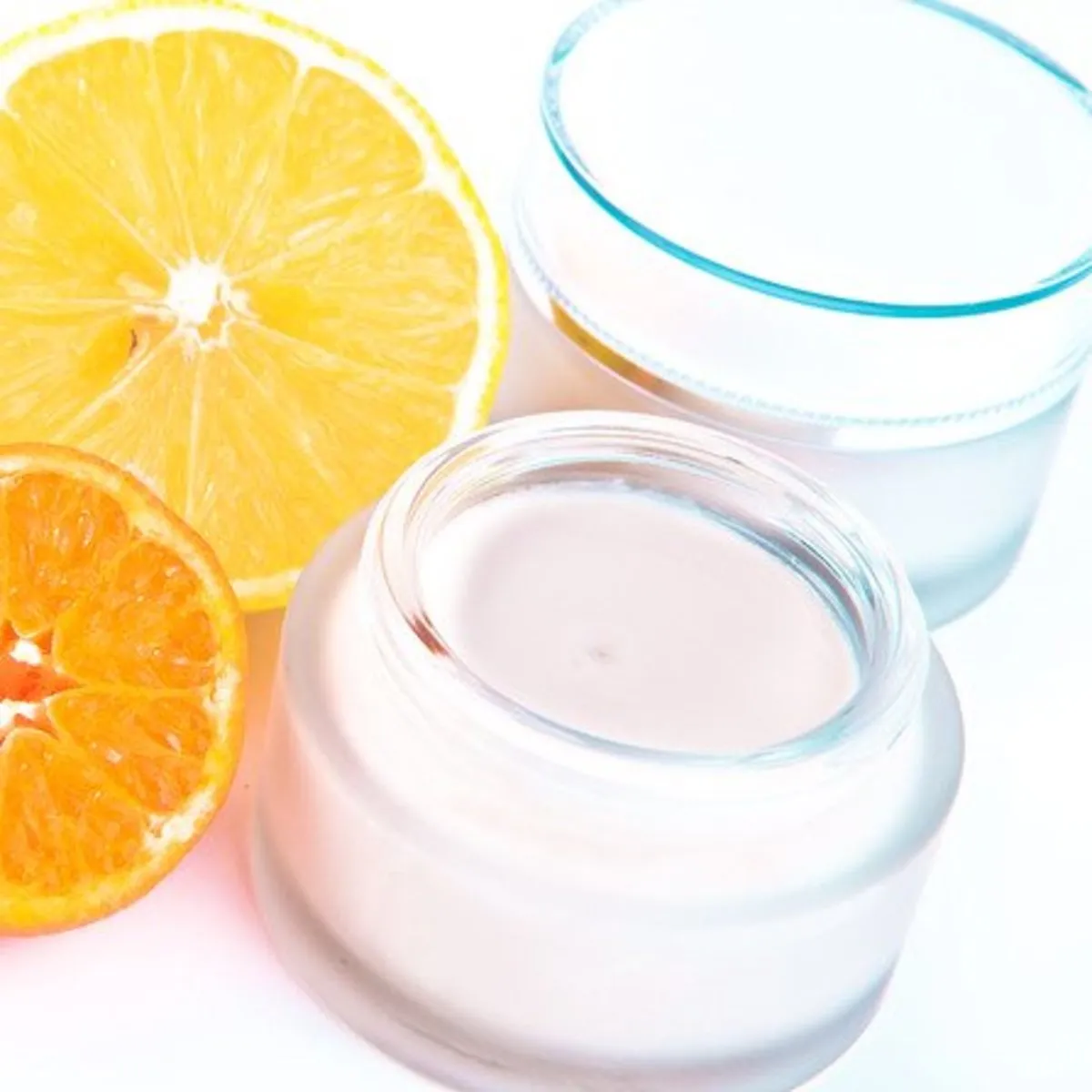
Niacinamide, a form of Vitamin B3, is a versatile ingredient with numerous benefits for skin health, including whitening effects. It helps reduce hyperpigmentation by inhibiting the transfer of melanosomes (melanin-containing structures) to skin cells. This action helps even out skin tone and diminish the appearance of dark spots. Niacinamide also has anti-inflammatory properties, which can soothe irritated skin and reduce redness. Furthermore, it strengthens the skin barrier, improving its ability to retain moisture and protect against environmental damage. Other benefits include minimizing pore size and reducing oil production, making niacinamide a suitable ingredient for various skin types. Its gentle nature makes it a good option for those with sensitive skin.
How Niacinamide Works
Niacinamide primarily works by blocking the transfer of melanosomes from melanocytes (melanin-producing cells) to keratinocytes (skin cells). This action reduces the amount of melanin visible on the skin’s surface, leading to a more even skin tone and reduced hyperpigmentation. Additionally, niacinamide boosts the production of ceramides, key components of the skin’s natural barrier. By strengthening the skin barrier, niacinamide improves moisture retention and protects against irritants. It also helps regulate oil production, which can reduce acne breakouts. Its anti-inflammatory effects soothe the skin, making it a beneficial ingredient for various skin conditions, including rosacea and eczema. The combined effects make niacinamide a highly effective and well-tolerated ingredient in skincare.
Niacinamide and Skin Tone
Niacinamide’s effectiveness in improving skin tone is well-documented. Regular use can significantly reduce hyperpigmentation caused by sun damage, acne scars, or hormonal changes. It helps fade dark spots and create a more uniform complexion. Niacinamide’s ability to regulate melanin transfer is a key mechanism in its whitening effect. It works well for all skin types, including sensitive skin. Incorporating a niacinamide serum or cream into your skincare routine can gradually lead to a brighter, more radiant appearance. Consistent application is essential to achieve the best results. Niacinamide, when combined with other whitening ingredients, can further enhance skin tone benefits.
Retinoids Benefits

Retinoids, derived from Vitamin A, are powerful ingredients known for their anti-aging and skin-brightening effects. They work by accelerating cell turnover, which helps shed old, pigmented skin cells and reveal new, brighter skin underneath. Retinoids also stimulate collagen production, improving skin elasticity and reducing the appearance of fine lines and wrinkles. They have the ability to reduce hyperpigmentation by inhibiting melanin production and promoting even skin tone. Retinoids are available in various forms, from over-the-counter retinol to prescription-strength tretinoin. Their versatility and efficacy make them a cornerstone in many skincare routines, but their use requires careful consideration due to potential side effects.
How Retinoids Works
Retinoids work primarily by binding to retinoic acid receptors in skin cells. This binding triggers various changes, including increased cell turnover, which exfoliates the skin and promotes the shedding of pigmented cells. They also inhibit melanin production by reducing the activity of tyrosinase, the enzyme responsible for melanin synthesis. This dual action helps reduce dark spots, acne scars, and uneven skin tone. Furthermore, retinoids stimulate collagen production, which improves skin firmness and reduces wrinkles. The process can also unclog pores, reducing acne breakouts. Due to their strength, it is important to start with a low concentration of retinoids and gradually increase use as tolerated, while using sunscreen to protect the skin.
Retinoids and Hyperpigmentation
Retinoids are highly effective in treating various forms of hyperpigmentation, including sunspots, age spots, and post-inflammatory hyperpigmentation (PIH). By accelerating cell turnover, retinoids help shed pigmented skin cells, allowing new, evenly toned skin to emerge. They also inhibit tyrosinase, which reduces the production of new melanin. In addition, retinoids can help fade acne scars by promoting cell renewal and reducing inflammation. The results are often visible within several weeks to months of consistent use. Regular application of retinoids, in combination with sun protection, significantly improves skin tone. Consider consulting with a dermatologist to determine the most suitable retinoid strength and formulation for your skin type and concerns.
Alpha Hydroxy Acids (AHAs) Benefits
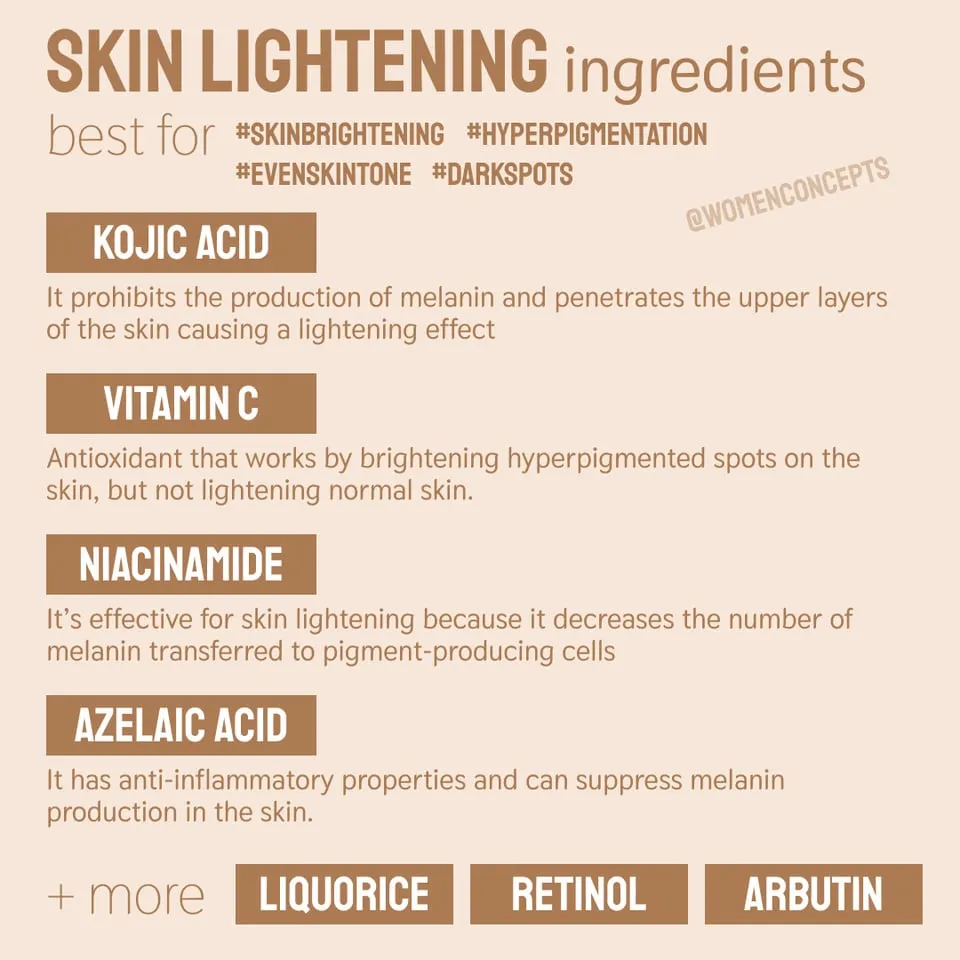
Alpha Hydroxy Acids (AHAs) are a group of water-soluble acids derived from natural substances like fruits, milk, and sugar cane. They are excellent exfoliants, removing dead skin cells from the surface, revealing brighter, more even-toned skin underneath. By promoting cell turnover, AHAs reduce the appearance of dark spots and hyperpigmentation. They also improve skin texture, reduce fine lines and wrinkles, and enhance skin hydration. Glycolic acid and lactic acid are the most popular AHAs, each having unique properties. AHAs are a gentle yet effective way to improve skin radiance and overall appearance. However, it is essential to use them with caution, as they can increase sun sensitivity.
How AHAs Works
AHAs work primarily by exfoliating the skin’s surface, breaking down the bonds that hold dead skin cells together. This process promotes cell turnover, revealing fresh, new skin with improved texture and tone. Glycolic acid, the smallest AHA molecule, can penetrate deeper into the skin and provide more intense exfoliation. Lactic acid, being larger, is gentler and also hydrates the skin. By exfoliating, AHAs help reduce the appearance of dark spots, improve skin radiance, and minimize fine lines and wrinkles. The process helps unclog pores, making AHAs beneficial for acne-prone skin. Consistent use of AHAs can significantly improve skin health. Always use sunscreen when using AHAs.
AHAs and Exfoliation
Exfoliation is a key benefit of AHAs. Removing dead skin cells allows for better penetration of other skincare ingredients, enhancing their effectiveness. The exfoliation process reveals smoother, brighter skin with a more even tone. AHAs help reduce hyperpigmentation by removing the top layers of skin where melanin can accumulate, and promoting the shedding of pigmented cells. The results are a more radiant complexion and a more youthful appearance. However, over-exfoliation can lead to irritation and increased sensitivity. It is best to incorporate AHAs gradually into your routine and start with low concentrations. Combining AHAs with sun protection is important because they increase the skin’s sensitivity to the sun.
Arbutin Benefits
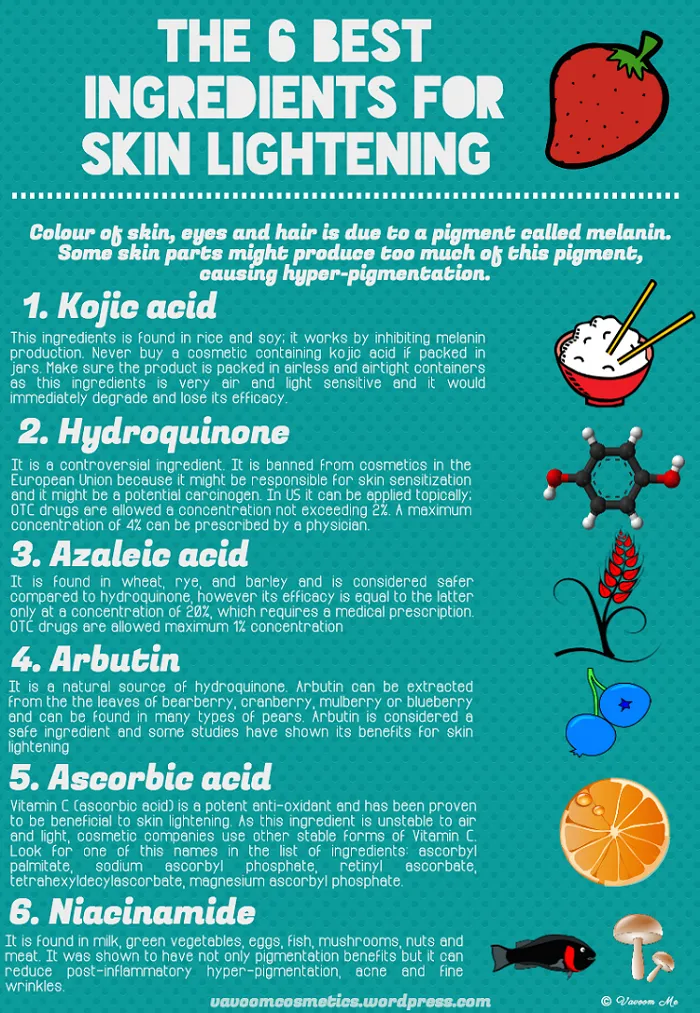
Arbutin is a natural skin-brightening agent extracted from the bearberry plant. It works by inhibiting tyrosinase, which prevents the formation of melanin, thus reducing dark spots and hyperpigmentation. Unlike some other whitening ingredients, arbutin is considered to be gentle, making it suitable for various skin types. Arbutin has antioxidant properties, helping to protect the skin from free radical damage. It also promotes a more even skin tone and overall brighter complexion. Arbutin is available in various skincare products, including serums and creams, and can be combined with other ingredients for enhanced benefits. Its gentleness and effectiveness make it a popular choice for those seeking to improve skin brightness.
How Arbutin Works
Arbutin functions by inhibiting tyrosinase, a crucial enzyme in melanin production. By blocking tyrosinase, arbutin helps reduce the amount of melanin formed, thus preventing dark spots and hyperpigmentation. There are two main forms of arbutin: alpha-arbutin and beta-arbutin. Alpha-arbutin is considered to be more effective than beta-arbutin. When used, arbutin breaks down into hydroquinone (a potent skin-lightening agent). However, unlike hydroquinone, arbutin is generally considered to be a gentler option, offering a lower risk of irritation. Arbutin is a good choice for those looking to brighten their skin and improve their overall skin tone, with a lower risk of adverse effects than some other whitening ingredients.
Arbutin and Skin Brightening
Arbutin is highly effective in skin brightening. It helps reduce the appearance of dark spots caused by sun damage, acne scars, and hormonal changes. When used regularly, arbutin promotes an even skin tone and a more radiant complexion. Its gradual action allows for a more natural and less harsh approach to skin brightening. Arbutin can be used in combination with other skincare ingredients, such as vitamin C and niacinamide, to enhance its skin-brightening benefits. Consistent application is key to achieving noticeable results. Its gentle nature makes arbutin a good option for those seeking to enhance their skin’s natural radiance without significant irritation.
How to Choose the Right Whitening Ingredients
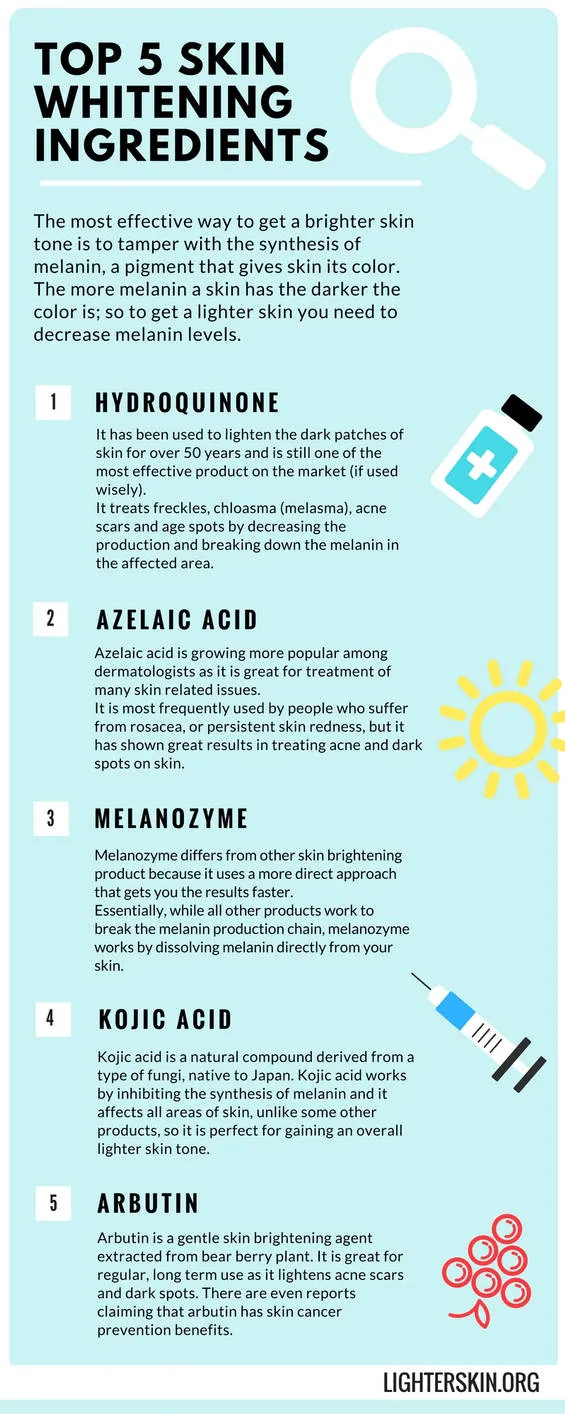
Considering Your Skin Type
When choosing whitening ingredients, it is vital to consider your skin type. For sensitive skin, milder options like arbutin and niacinamide are often preferred, as they are less likely to cause irritation. Those with oily or acne-prone skin may benefit from ingredients that help regulate oil production, like niacinamide. People with dry skin should look for ingredients that also hydrate the skin, such as lactic acid. It is always important to start with a low concentration of any new ingredient and gradually increase it. Consulting a dermatologist can help you determine the best ingredients and formulations for your skin type and concerns.
Reading Ingredient Labels
Carefully reading ingredient labels is crucial when selecting whitening products. Look for the active ingredients discussed, such as vitamin C (ascorbic acid), niacinamide, retinoids (retinol, tretinoin), AHAs (glycolic acid, lactic acid), and arbutin. Be aware of the concentration of these ingredients, as higher concentrations are often more potent but can also increase the risk of irritation. Also, check for other beneficial ingredients, such as antioxidants, humectants, and soothing agents. Avoid products with harsh irritants, like fragrances or alcohol, especially if you have sensitive skin. When in doubt, seek professional guidance to understand the ingredients and choose the right products for your skin.
Patch Testing New Products
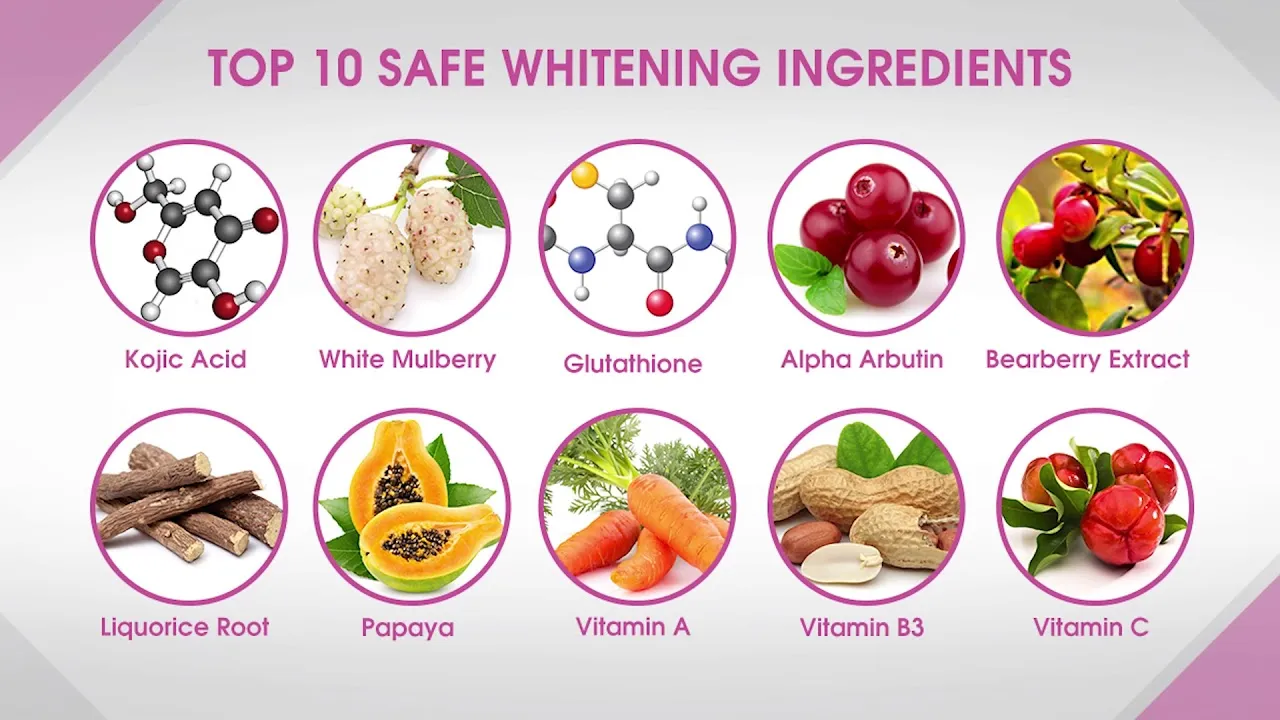
Patch testing is a crucial step before incorporating any new whitening product into your routine. Apply a small amount of the product to a discreet area of your skin, such as behind your ear or on your inner arm, and wait for 24-48 hours. Observe the area for any signs of irritation, such as redness, itching, burning, or swelling. If you experience any adverse reactions, discontinue use immediately. If there are no adverse reactions, you can safely incorporate the product into your routine. Patch testing helps to identify potential sensitivities and prevent widespread reactions. It is especially important when using potent ingredients like retinoids or AHAs.
Potential Side Effects and Risks
Common Side Effects
Whitening ingredients can cause side effects. Common side effects include dryness, redness, peeling, and irritation, particularly with retinoids and AHAs. Sun sensitivity is a common risk, so always use sunscreen with a high SPF and seek shade. Hyperpigmentation or darkening of the skin can occur if the product is not used correctly, especially with hydroquinone. Allergic reactions are also possible. It is important to use products as directed and to stop using them if you experience any severe adverse reactions. Consulting a dermatologist can help you manage side effects and prevent potential complications.
Who Should Avoid Whitening Ingredients
Certain individuals should avoid or use caution when using whitening ingredients. Those with very sensitive skin or certain skin conditions, such as eczema or rosacea, should be cautious. Pregnant or breastfeeding women should consult their doctor before using these products. People with a history of allergic reactions to skincare ingredients should carefully review the product’s ingredients and perform patch testing. Also, individuals who spend a lot of time in the sun should be extra careful. Always consult with a dermatologist to assess your skin’s specific needs and determine the safety of using whitening ingredients.
Conclusion
Whitening ingredients offer a diverse range of benefits for improving skin tone and radiance. From the antioxidant power of Vitamin C to the cell-renewing action of retinoids, each ingredient has unique mechanisms and advantages. Understanding your skin type and choosing ingredients accordingly is essential to avoid irritation and maximize results. Reading labels, performing patch tests, and using sun protection are vital. While these ingredients can be highly effective, being aware of potential side effects and risks is essential. Consider these steps to safely and effectively incorporate whitening ingredients into your skincare routine and achieve brighter, healthier skin.
